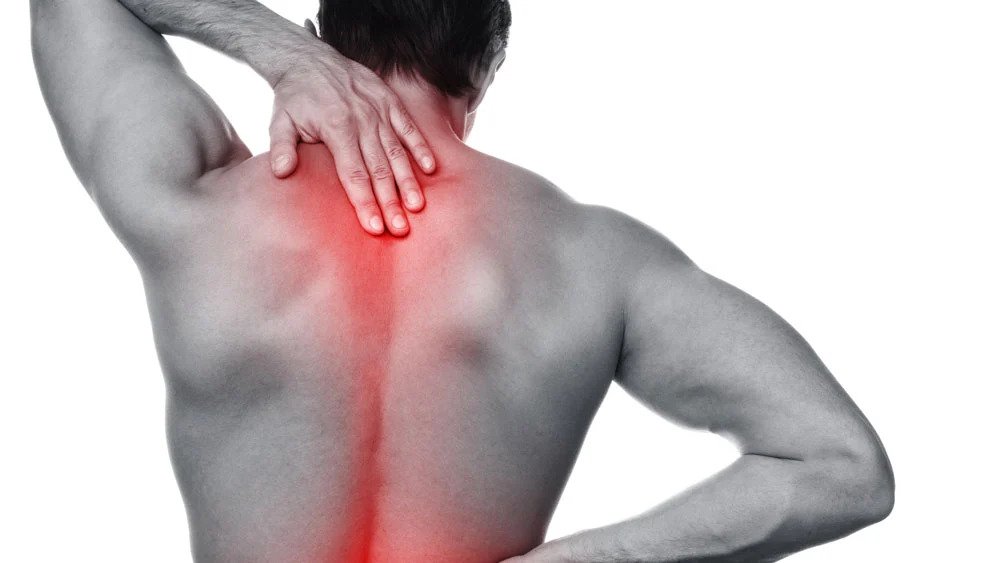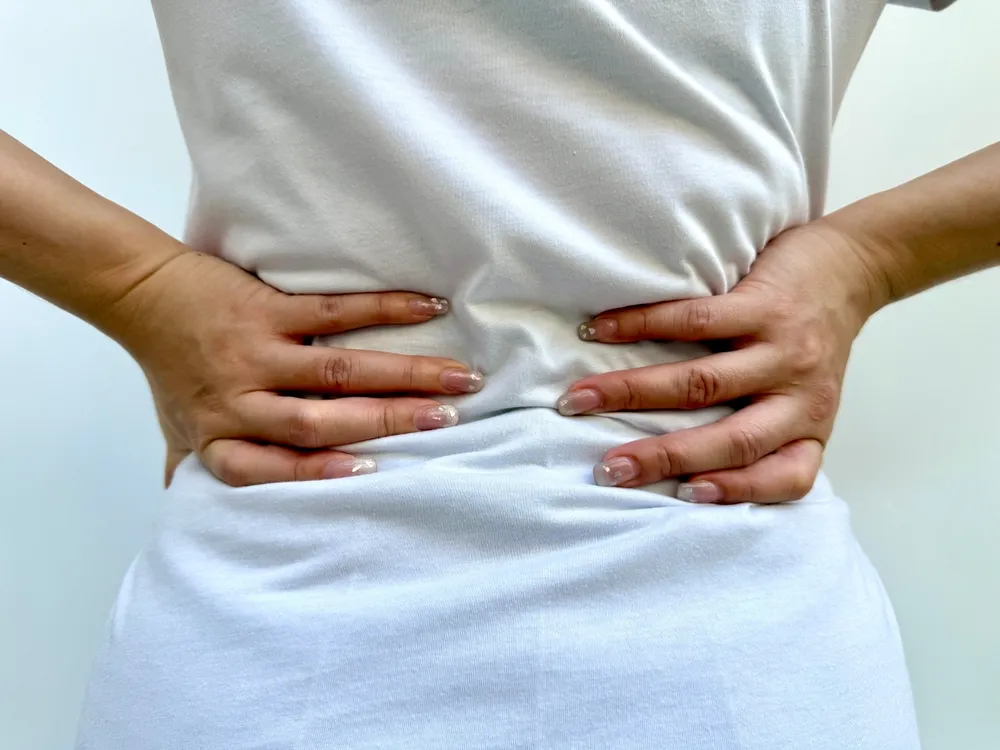[et_pb_section fb_built=”1″ _builder_version=”4.6.5″ _module_preset=”default” custom_padding=”0px||0px||true|false” hover_enabled=”0″ sticky_enabled=”0″][et_pb_row _builder_version=”4.6.5″ _module_preset=”default”][et_pb_column _builder_version=”4.6.5″ _module_preset=”default” type=”4_4″][et_pb_text _builder_version=”4.6.5″ _module_preset=”default” hover_enabled=”0″ sticky_enabled=”0″]
DOMS, also known as Delayed Onset Muscle Soreness, is an unpleasant feeling. After all your hard work exercising at the gym, this is what you’re rewarded with?
The pain is enough to make you want to never work out again.
DOMS however, are a normal part of staying healthy and active. The great thing is that once you get over the initial soreness and consistently exercise, DOMS becomes a thing of the past!
In this guide, we’ll show you how to treat DOMS and get you back in the gym sooner than later.
What is DOMS?
Delayed Onset Muscle Soreness (DOMS) is muscle pain that occurs after excessive or unaccustomed exercise. The pain and soreness is especially greater if the muscles have been subject to long periods of inactivity.
What Causes DOMS?
When your muscles are subject to high-intensity training or exercise, microscopic tears occur in the muscle fibers. This damage causes your muscles to become inflamed and sore.
The key thing to remember is that DOMS is more likely when you do exercise that you have not done before or at a higher intensity or volume. As you continue to exercise and workout, your body becomes accustomed to the movement and DOMS is less likely to occur.
While any type of exercise can result in DOMS, it’s been found that it is more prevalent after eccentric exercises. These are exercises that contract the muscle while lengthening it at the same time. These include the downward motion of a squat or running uphill.
How to get rid of DOMS
DOMS usually occurs 24 – 48 hours after a workout, but there are things you can do both after exercising and once DOMS sets in to relieve it. Keep reading to find out how to treat DOMS!
#1 – Apply Heat Patches or Ice Packs
Both heat and ice are great forms of DOMS treatment. However, they do so in different ways and should be applied in appropriate situations.
Heat has been shown to be super effective in reducing the soreness of muscles. It encourages improved blood flow and increases the flexibility of affected muscles.
Ice on the other hand is great for joints and the surrounding muscles as it reduces swelling and inflammation, and provides DOMS relief.
#2 – Wear Compression Clothing
Compression clothing is skin-tight clothing made to put pressure on your body as you work out. This might seem uncomfortable but compression clothing helps to reduce the painful effect of DOMS.
How does it do this? According to studies, compression clothing constricts your muscles to reduce the fluid buildup that occurs when your muscles are overworked. This in turn reduces swelling and increases blood flow.
So next time you go on your run, try wearing compression tights to help minimise DOMS!
#3 – Stay Active
The worst thing you can do for your DOMS is to stay still. And while it may be tempting to lie in bed, periods of inactivity can actually increase the pain and soreness of DOMS.
How? Inactivity can make your muscles “lock-up” so that when it does come to moving them, the soreness is significantly greater.
Instead, try doing some light activity such as gentle stretches or a quick walk. This helps circulation in your muscles and keeps blood pumping throughout the body.
So should you exercise with DOMS? Yes, you should. But don’t overdo it! You’ll end up causing further damage to your recovering muscles.
#4 – Sink into an Epsom Salt Bath
Epsom salt is also known by its ‘fancy’ name, magnesium sulfate. It has a long history of being used to treat aches and pains. It’s still very effective and widely used today!
The best way to apply epsom salts is through an epsom salts bath. A short, hot bath will do wonders for your DOMS. The heat relieves pain and improves blood flow; the epsom salt removes toxins such as lactic acid from your muscles which reduces swelling.
#5 – Enjoy a Massage
If you want to find another answer on how to treat DOMS, look no further than massages! Massages are well-known for their ability to treat muscle pain and soreness. Whether you choose to use an electric massager or go for traditional massage therapy – you’ll be able to enjoy their soothing benefits.
They work by applying pressure to specific areas and improving blood circulation. This allows for oxygen and nutrient rich blood to reach these muscles, reducing swelling, inflammation and improving recovery.
#6 – A Proper Diet Does Wonders
Proper post-workout recovery is aided by a healthy diet! There are many foods out there that greatly benefit recovery and reduce DOMS. Here are some examples:
- Blueberries, strawberries, oranges: these are foods that have anti-inflammatory properties which can help your muscles recover quicker.
- Nuts, green tea, dark green leafy vegetables: stacked with antioxidants, these foods are able to reduce soreness.
- Oily fish such as salmon: oily fish are known for their high amounts of omega 3 fatty acids, which is known to reduce inflammation and promote recovery.
With these tips, you’ll learn how to treat DOMS and overcome their pain. Remember that DOMS is a sign that you’re progressing with your fitness and exercising! Once you learn how to accelerate DOMS recovery, you’ll be able to stay active and get back to the gym once more.
For more tips on how to live a healthy, active lifestyle, check out the OSIM UK Wellness Hub! And to get your own DOMS-reducing massager, take a look at our wide range of products. Designed to give you the comfort you deserve, they’re perfect for recovering from a bout of DOMS.
[/et_pb_text][/et_pb_column][/et_pb_row][/et_pb_section]




